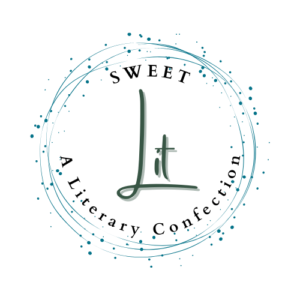While attending an artist residency this summer, I lived with two poets working on a joint chapbook. I had never thought of writing as a collaborative process before, but I was beginning to imagine how it could be. When Sweet published the essay, “Come Closer,” a collaborative effort between Brenda Miller and Lee Gulyas, I figured this would be the perfect opportunity to learn more!
Brenda and Lee teach writing at Western Washington University where Brenda serves as the Director of Graduate Studies. They were kind enough to answer my questions in this email interview.
Q: What made you decide to work together on this collaborative piece?
Lee: For years Brenda and I have written together, given each other deadlines, and practiced what I call “writing by hostage.” I was going to be gone for the entire summer leading a study abroad program in Rwanda, and we were trying to figure out how to continue to work together, and somehow came up with the idea that one of us would send an image and both of us would write in response to the image and send the draft by the agreed-upon deadline. The only rules were that 1) we couldn’t look at what the other had written until we were finished and 2) to meet the deadline.
Brenda: I remember Lee walking into my office at school toward the end of the year and exclaiming: “Collaboration! Right?,” throwing her arms up in the air, and then walking out. This is her style, and what I love about our rapport. We’d been thinking about how our writing could support one another over the upcoming summer. We’ve often gone on writing retreats together, working on our individual projects, but I’d taught a class on collaboration earlier in the year, and the seeds had been brewing for us to combine forces.
Q: What can you tell your readers about the photographs you chose to write about? How was it different to write about the photograph you sent versus the one that was sent to you?
Brenda: I started at random, choosing a photo that happened to be on my desk, of me at five years old. I don’t know why that photo was out, but there it was. I teach a class on autobiography and photography, and we learn to look for the “punctum”: the unexpected detail that intrigues you. For me, it was those suspenders. I found that when I wrote to my own photos, I had already been developing the punctum just through the process of choosing them to send, even if that choice was random and immediate. When I needed to write to Lee’s photos, I was often taken by surprise, which shifted my writing brain into high alert.
Lee: I responded to Brenda’s photo quickly, but had a difficult time choosing a photo because I was half a world away, and thought of “Steamfitter” by Lewis Hine, one of my favorite photographs. I tried not to overthink it, not choose an image because I knew what I would write, because where’s the fun in that?
Sometimes I had a clear connection with a photo, that “punctum” Brenda mentioned–regardless of who chose the image. And one of my favorite responses was to a photo that frustrated me–the one with the house and the dog that became “On Patrol” in our Sweet essay. I was so mad when I opened that photo! It was so removed from everything I was experiencing in Rwanda, and here I was–stuck with it. But I surrendered to the process and it worked.
Q: There’s an element of mystery in not knowing who is writing each specific piece. Was this intentional and, if so, what effect do you think it has on the reader?
Brenda: Yes, it was intentional, though we had considered the idea of labeling the speakers for each section. In some of the examples I used for my class on collaboration, some writers made the speakers explicit and some didn’t. When you don’t apply “ownership” to the separate pieces of writing, the pieces, for us, took on a more ego-less state. It became not so much about our own writing, but about the conversation: not only between the two of us, but between our voices and the photos that spurred them.
Lee: Last weekend we conducted a workshop on collaboration at The Chuckanut Writers Conference and Brian Doyle said, “Your goal is to write a story so good, no one remembers who wrote it.”
Accordingly, I see our process in the service of the larger story, which depends on connection and fluidity. Also, if we labeled the individual pieces we are emphasizing not only ownership, but the division, when what we are aiming for is the synchrony, the coincidences, and the juxtapositions that occur through the joining of voices.
Q: Was there a sense of a continuing thought or theme as you exchanged photographs and writing?
Brenda: As we were writing to each photo, we weren’t thinking about the project as a whole. We really allowed the photograph to dictate what we wrote. At the end of the summer, we had about 12 different pieces to look at together, and that’s when the magic happened! It was wonderful to see how a certain “telepathy” came into play, with each of us writing about similar themes without knowing it. We chose six of the sections that seemed to work together as a unit, rearranged the order, and titled the essay. But that initial draft used some work by photographer Andre Kertesz, and we couldn’t obtain the rights for publication, so we ended up creating another draft, using two different sections. I ended up liking this one, the final product you see in Sweet, even more.
Lee: I think themes evolve–if you write enough, themes and symbols will emerge. So I haven’t been thinking about that at all. I just play.
What does happen is surprising. Sometimes I surprise myself. My response to an image is something I haven’t considered before, or a memory that emerged from (seemingly) nowhere, but of course had been lurking or neglected, and only made visible through this process. I’m also consistently surprised by Brenda’s writing. And when we merge our responses and the image something new manifests. It’s a rejuvenating experience. We only think about theme and order and structure later.
–Carmella Guiol







